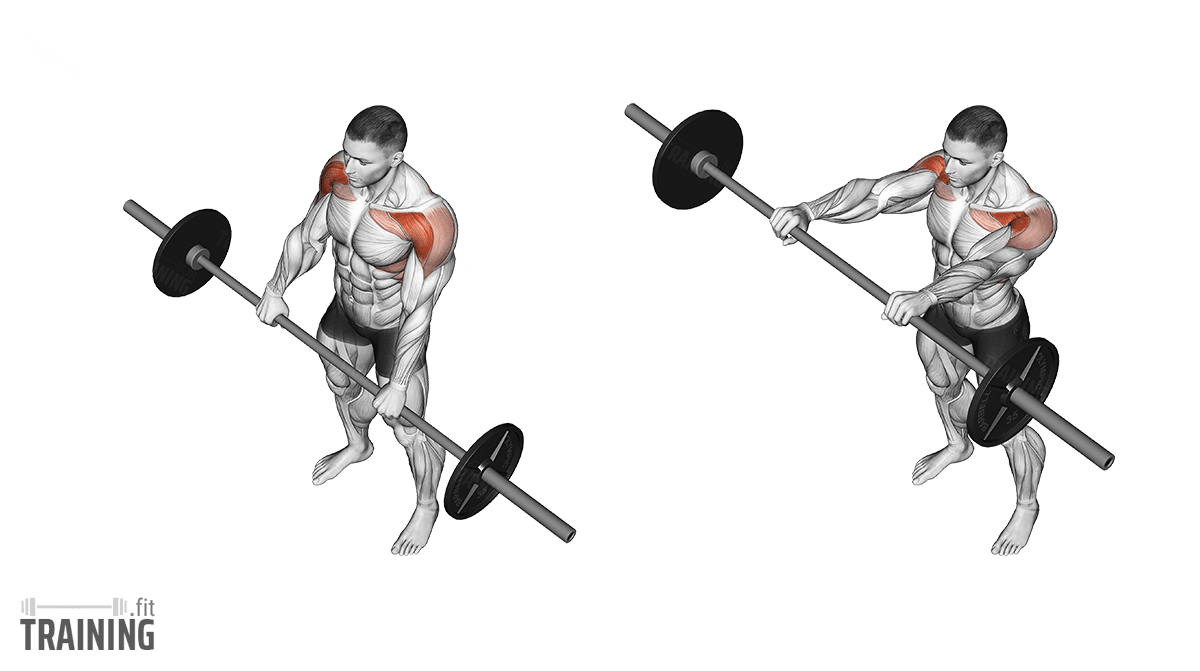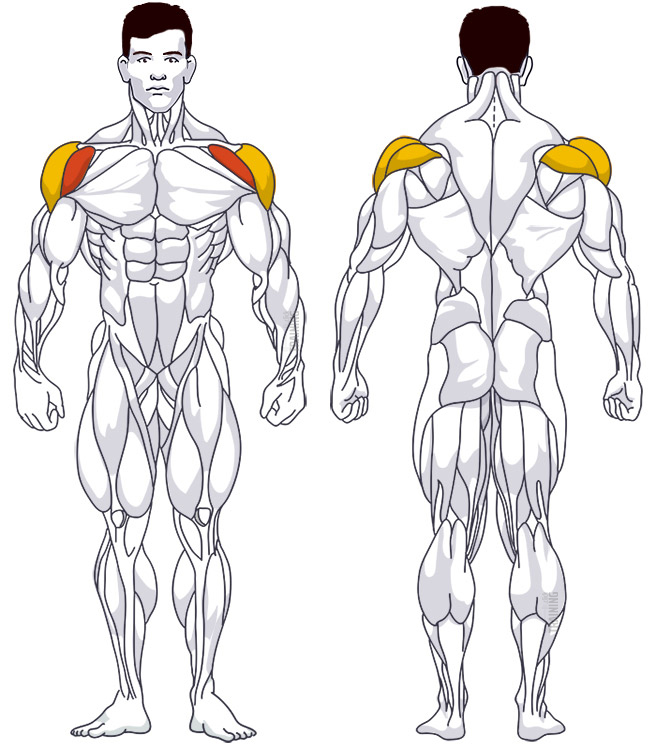Barbell Front Raise
Isolation exercise, Free weightsOverview

Main muscles
- Shoulder: Anterior deltoid muscle
(Musculus deltoideus, Pars clavicularis)
Training plans
Here you can find example plans for barbell front raise training:
Barbell Front Raise: Basics and alternatives

Involved main muscle groups:
Barbell Front Raise
Barbell front raises are an alternative to dumbbell front raises, offering a similar workout. You lift a weight with straight arms in front of your body, activating your front shoulder muscles.
As with dumbbell front raises, this isolation exercise may not always be necessary in addition to essential exercises (like the bench press or dips). This is especially true for beginners, as the anterior deltoids are already activated in many compound exercises.
Consider performing compound exercises, like the lat pulldown, to train all shoulder muscles more evenly. Aim for a balanced training stimulus, ensuring that the lateral and posterior muscles of the shoulders aren’t neglected. You can do this with lateral raises or rowing, for example.
Correct execution
Since using a barbell limits your posture more than dumbbells, it’s recommended to start with an unweighted barbell until you perfect the movement. Once you’ve done that, you can add weight.
If you have shoulder issues, try changing the grip position. Front raises are typically done in an overhand grip, but you can switch to an underhand grip. You can also use an EZ bar for “barbell” front raises, as the underhand grip may be even more shoulder-friendly in this case.
Video tutorial
Step-by-step instructions
Lift the barbell with an overhand grip off the floor (through your legs) or from the rack, keeping your back straight and standing hip-width apart. Your arms should be extended in front of your body.
Form a slight hollow back while keeping the rest of your back straight.
Slightly bend your elbows so they aren’t fully extended.
Slowly and controlled, lift the weight forward with arms extended (elbows still slightly bent) and stop the upward movement when the barbell reaches shoulder height.
Lower the barbell down in the same controlled manner.
Common mistakes
People often use heavier weights for barbell front raises than dumbbell front raises, which can compromise form. Throughout the exercise, keep your back straight and your core tense.
Your upper body should stay in the same position during the exercise. Don’t lean back further during the lift, even if it helps lift the weight. This can lead to swinging motions, which you should avoid.
Also, ensure you don’t lower the weight too quickly or drop it. When you reach the end of the upward movement, bring the weight back down slowly and in a controlled manner.